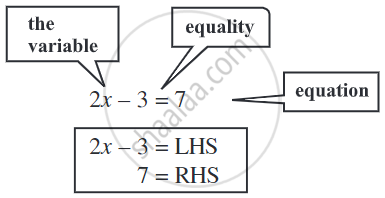Topics
Number Systems
Number Systems
Polynomials
Algebra
Coordinate Geometry
Linear Equations in Two Variables
Geometry
Coordinate Geometry
Introduction to Euclid’S Geometry
Mensuration
Statistics and Probability
Lines and Angles
- Introduction to Lines and Angles
- Basic Terms and Definitions
- Intersecting Lines and Non-intersecting Lines
- Introduction to Parallel Lines
- Pairs of Angles
- Parallel Lines and a Transversal
- Angle Sum Property of a Triangle
Triangles
- Concept of Triangles
- Congruence of Triangles
- Criteria for Congruence of Triangles
- Properties of a Triangle
- Some More Criteria for Congruence of Triangles
- Inequalities in a Triangle
Quadrilaterals
- Concept of Quadrilaterals
- Properties of a Quadrilateral
- Types of Quadrilaterals
- Another Condition for a Quadrilateral to Be a Parallelogram
- Theorem of Midpoints of Two Sides of a Triangle
- Property: The Opposite Sides of a Parallelogram Are of Equal Length.
- Theorem: A Diagonal of a Parallelogram Divides It into Two Congruent Triangles.
- Theorem : If Each Pair of Opposite Sides of a Quadrilateral is Equal, Then It is a Parallelogram.
- Property: The Opposite Angles of a Parallelogram Are of Equal Measure.
- Theorem: If in a Quadrilateral, Each Pair of Opposite Angles is Equal, Then It is a Parallelogram.
- Property: The diagonals of a parallelogram bisect each other. (at the point of their intersection)
- Theorem : If the Diagonals of a Quadrilateral Bisect Each Other, Then It is a Parallelogram
Circles
Areas - Heron’S Formula
Surface Areas and Volumes
Statistics
Algebraic Expressions
Algebraic Identities
Area
Constructions
- Introduction of Constructions
- Basic Constructions
- Some Constructions of Triangles
Probability
Definition
- Linear Equation in One Variable: If there is only one variable in the equation then it is called a linear equation in one variable.
Notes
Linear Equation in One Variable:
If there is only one variable in the equation then it is called a linear equation in one variable. These are called linear equations in one variable because the highest degree of the variable is one.
These are linear expressions:
2x, 2x + 1, 3y – 7, 12 – 5z, `5/4(x - 4) + 10`
These are not linear expressions:
x2 + 1, y + y2, 1 + z + z2 + z3. ....(since highest power of variable > 1)
The general form is ax + b = c, where a, b and c are real numbers and a ≠ 0.
Example:
x + 5 = 10, y – 3 = 19.
Some Important points related to Linear Equations:

-
There is an equality sign in the linear equation. The expression on the left of the equal sign is called the LHS (left-hand side) and the expression on the right of the equal sign is called the RHS (right-hand side).
-
In the linear equation, the LHS is equal to RHS but this happens for some values only and these values are the solution of these linear equations.
If you would like to contribute notes or other learning material, please submit them using the button below.
Shaalaa.com | Linear Equations & Linear Equations in One Variable
to track your progress
Series: Linear Equations & Linear Equations in One Variable
0%
